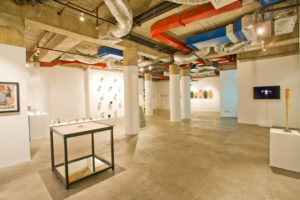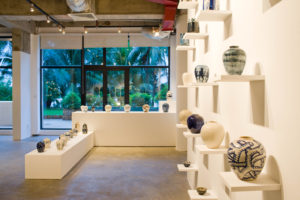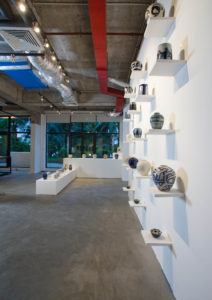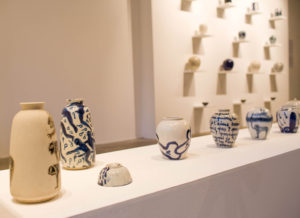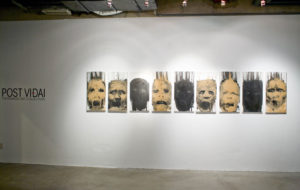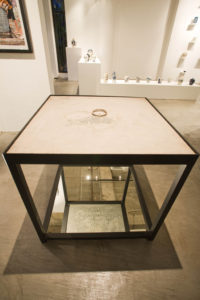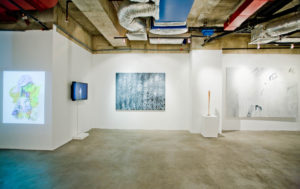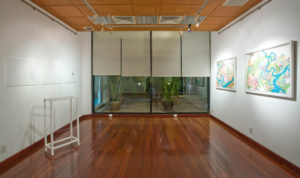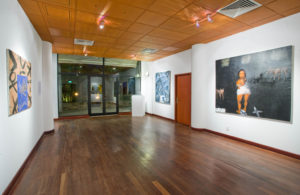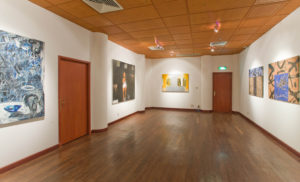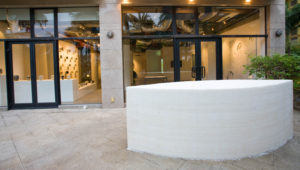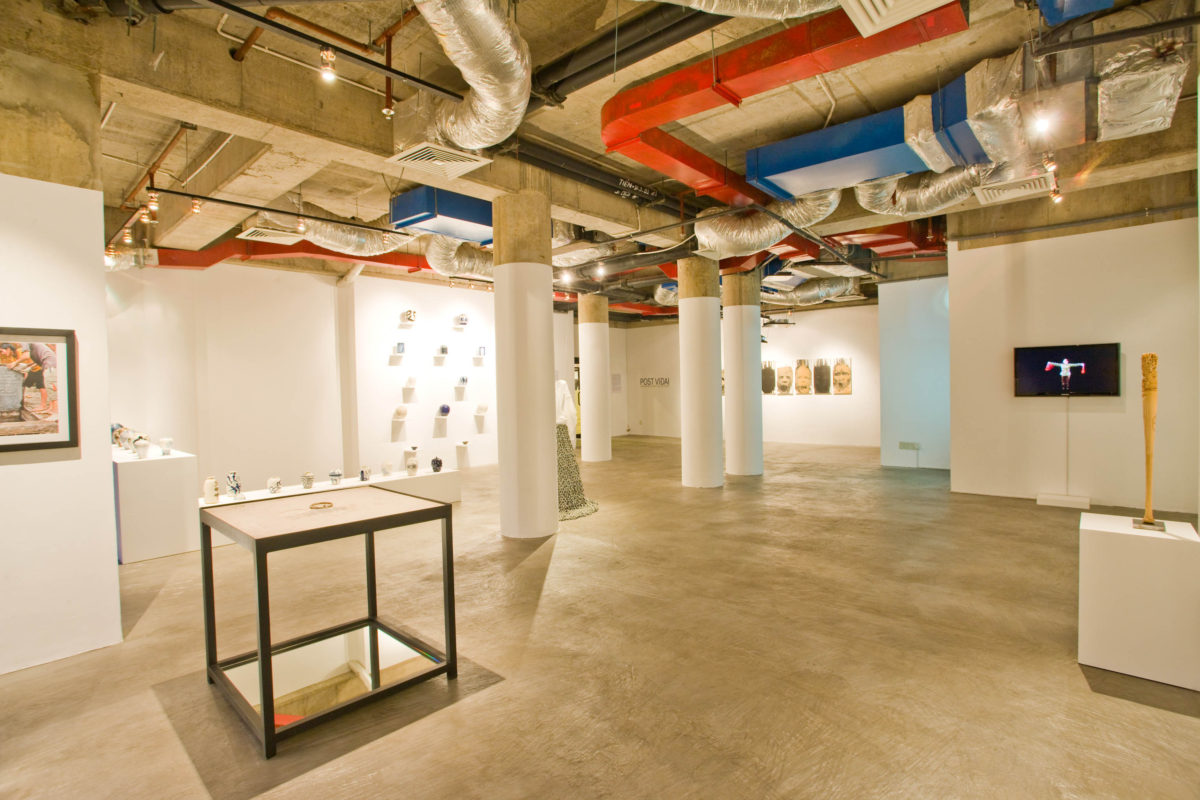
Post Vidai is pleased to present the first exhibition of a select number of works from its holdings.
Post Vidai is a private art collection that was established in 1994. Housed between Ho Chi Minh City and Geneva, this collection focuses on the post Doi Moi generation of artists whose experimental languages have pushed the international recognition of Vietnamese contemporary art. Post Vidai seeks to acquire art works that visually expand the presumed technical and conceptual practices of traditional Vietnamese art, particularly works that take the beauty of Vietnam to a higher, complex level of engagement with international artistic debates concerning subject, material and form. Post Vidai is pleased to present the first exhibition of a select number of works from its holdings.
The entry foyer, holding the collected work of George Papadimas and Ho Hoang Dai, is regularly on view for the guests of Saigon Domaine.
Multipurpose Room
The introduction of economic reforms in 1986, known as ‘Doi Moi’, ushered in new ways of experimentation in artistic practice across Vietnam. With artists gaining a wider knowledge of international art movements, a number of critical voices arose that sought to use their art as a means of sharing their questioning of the social changes and inconsistencies around them. During this period, many Vietnamese artists also returned from abroad, their categorization as ‘Viet Kieu’ presenting complex dilemmas in their alternate perspective of what it means to possess a contemporary Vietnamese identity that is struggling to come to terms with its own history.
From the right to choose your sexuality; to the questioning of how society operates under individual and collective strategies of control; to the methodologies of religious persecution; to the changing street language of Vietnam and its influence on aspirations of social status — what you witness in this room is a select number of significant voices who speak to the changing social fabric of Vietnam by Truong Tan, Do Hoang Tuong, Hoang Duong Cam, Nguyen Minh Phuoc, Nguyen Trung and Tuan Andrew Nguyen.
Small gallery
Mapping the internal and external transformation of physical and psychological space is playfully rendered here in three distinct artistic languages. Sandrine Llouquet’s playground of figure, line and shadow carves out her own sense of contemplative calm; Hoang Duong Cam’s gestural bodies leap and contort in search of individual and collective meaning, while Tiffany Chung’s meticulous coded maps chart ‘before and after’, revealing the sprawling greed of urban metropolis initially inspired by her experience of living in Ho Chi Minh City.
Library
Abstraction as a style in painting practice in Vietnam is a relatively recent phenomenon, with experimentation beginning in the early 1990s as a consequence of many artists gaining opportunity to study abroad, particularly to France and America. Previously argued as an art movement based predominantly in Hanoi, Post Vidai holds a significant number of works that confirms recent research arguing Saigon was an instrumental site for pushing the language of abstraction in painting in Vietnam. In this exhibition, Nguyen Trung (displayed in main gallery), Nguyen Cam, La Nhu Lan, Tran Van Thao and Do Hoang Tuong explore color, form and material in response to everyday personal interactions with architectural ideas of space, psychological investigations of human relationships or intimate responses to their natural environment.

